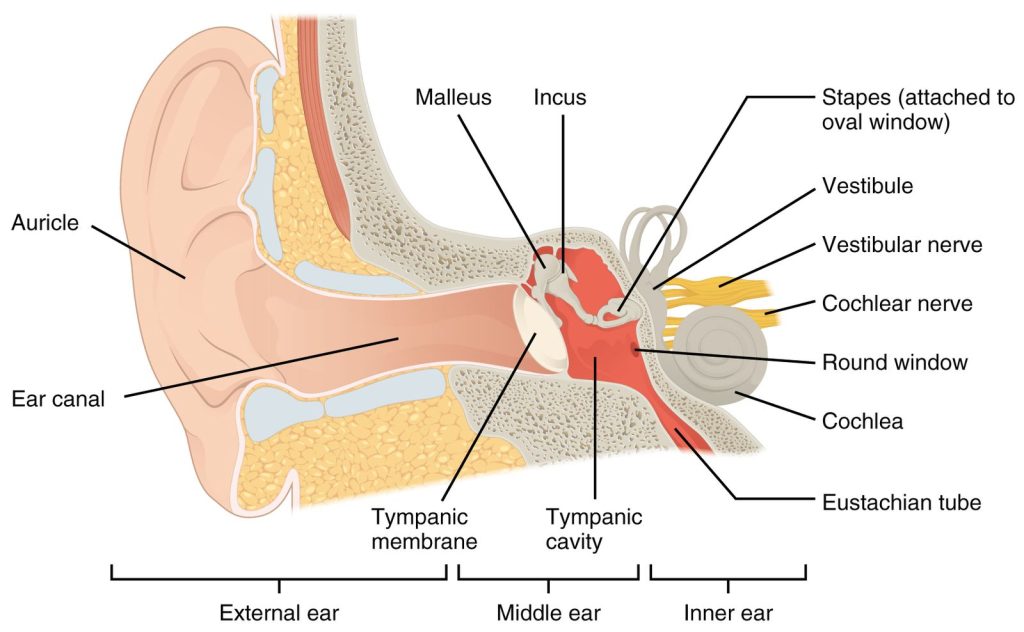The Mechanics of Hearing
45
Learning Objectives
Be able to describe what comprises the outer ear and its function.
Be able to describe mechanics of the middle ear and how to amplify sound waves.
Know what impedance and stapedius reflex mean.
The ear can be separated into multiple sections. The outer ear includes the pinna (the visible part of the ear that protrudes from our heads), the auditory canal, and the tympanic membrane (or eardrum). The middle ear contains three tiny bones known as the ossicles, which are named the malleus (or hammer), incus (or anvil), and the stapes (or stirrup). The inner ear contains the semicircular canals, which are involved in balance and movement (the vestibular sense), and the cochlea. The cochlea is a fluid-filled, snail-shaped structure that contains the sensory receptor cells (hair cells) of the auditory system.

Sound waves travel along the auditory canal and strike the tympanic membrane, causing it to vibrate. This vibration results in movement of the three ossicles. As the ossicles move, the stapes press into a thin membrane of the cochlea known as the oval window. As the stapes presses into the oval window, the fluid inside the cochlea begins to move, which in turn stimulates hair cells, which are auditory receptor cells of the inner ear embedded in the basilar membrane (more on the basilar membrane in the next section).
The stapedius reflex means that the stapedius muscle connected to the ossicles will tighten up to reduce the amplification when we’re exposed to loud sounds. But it’s not that effective—the muscle reflex is too slow to protect us from abrupt sounds like gunshot, and the muscles adapt after a while. Impedance refers to the ability of different objects to hinder sound. People will leverage the ossicles (smallest bones in the body) and since the tympanic membrane is larger than the oval window, it amplifies sound waves. The primary reason sound pressure waves need to be amplified is that the energy is being transferred from air (outer ear) to liquid (inner ear/cochlea). Air and water have different impedance, which means air is easier to move with air pressure waves than water.
CC LICENSED CONTENT, SHARED PREVIOUSLY
OpenStax, Psychology Chapter 5.4 Hearing
Provided by: Rice University.
Download for free at http://cnx.org/contents/4abf04bf-93a0-45c3-9cbc-2cefd46e68cc@5.103.
License: CC-BY 4.0
Adapted by: Pengda Wang
Cheryl Olman PSY 3031 Detailed Outline
Provided by: University of Minnesota
Download for free at http://vision.psych.umn.edu/users/caolman/courses/PSY3031/
License of original source: CC Attribution 4.0
Adapted by: Kori Skrypek and Pengda Wang

